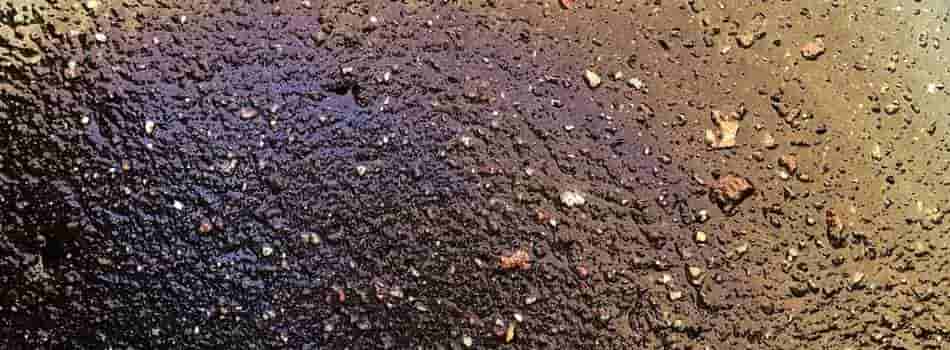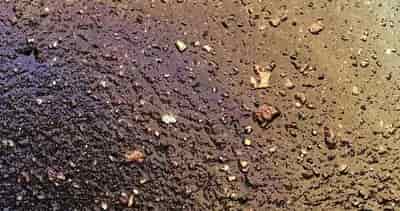Walking out to your garage and smelling a strong fuel odor can be quite alarming. You start looking around for the source of the leaking gas and notice the smell is coming from your Husqvarna mower. Because gas evaporates into the air, it can be hard to find the actual cause of the leak.
Your Husqvarna mower may be leaking gas because components in the carburetor have failed or are gummed up. Fuel leaks can develop in cracked fuel lines, an old fuel filter, a deteriorating fuel pump and a bad gas cap.
I’ll share the most common areas you will find a leak on your Husqvarna lawn mower.

This post may include affiliate links. Purchases made through these links may provide a commission for us, at no extra cost to you. As an Amazon Associate, we earn from qualifying purchases.
Follow all safety instructions provided in your equipment operator’s manual prior to diagnosing, repairing, or operating.Consult a professional if you don’t have the skills, or knowledge or are not in the condition to perform the repair safely.
Items Causing Your Husqvarna Mower to Leak Gas
- Dirty or Failed Parts on the Carburetor
- Old Fuel Filter
- Deteriorating Fuel Pump
- Rusted Metal Tank or Seam Failure on Poly Fuel Tank
- Fuel Shut-Off Valve
- Dry or Cracked Fuel Lines
- Cracked Primer Bulb
- Bad Seal in the Gas Cap
Husqvarna Carburetor is Leaking Gas
The carburetor is the place where the fuel gets stored for use after it leaves the fuel tank. There are several parts on your Husqvarna carburetor that can become dirty or fail to work properly.
Gasket failure in the carburetor bowl on your Husqvarna Mower
There is a bowl at the bottom of your carburetor where the fuel is stored and used to keep your engine running. Look where the bowl attaches to the carburetor and you will find a gasket.
The gasket kind of looks like a rubber band. It eventually wears out and will cause your Husqvarna to leak gas.
This is a common place for a fuel leak because the gasket is located near the engine. It is put under hot conditions when the engine is running and under cool conditions when your mower is not running.
The constant heating and cooling cause the gasket to become dry and lose its ability to form a seal. If you find your carburetor is leaking around this gasket, you can easily repair it. Begin the repair by shutting off the fuel supply.
Use the fuel shut-off valve under your gas tank or, if your mower doesn’t have a valve, use a clamp to clamp the fuel line. Once the fuel flow has been stopped, remove the screw and remove the carburetor bowl.
Make sure you have a rag on hand to catch any fuel that remains in the bowl. Remove the old gasket and replace it with a new one. Reinstall the bowl and the screw to hold it together.
Wipe down the carburetor to remove any fuel from the outside of the carburetor, turn back on your fuel supply and check for additional leaks. If you notice you still have leaks, check your float and needle.
Stuck float in your Husqvarna mower’s carburetor
Take a look at the area around the air intake port. If you find a leak here, you may have a stuck carburetor float. The float regulates how much gas is allowed to enter the carburetor bowl.
Without the float working correctly, it can fail to regulate the amount of fuel in the bowl and continue to let fuel into the bowl causing excess fuel to run out of the carburetor.
If your float needle is stuck, you will need to pull the carburetor apart to find the cause of the failure. You may be able to clean it or you may have to rebuild it. Read the procedures for cleaning the carburetor in this article.
Stuck float needle on your Husqvarna Mower
The needle works with the carburetor float to keep gas flowing into the bowl. The needle can get stuck and may need to be replaced. You can attempt to repair it yourself or take to your local Husqvarna dealer to be rebuilt.
To temporarily get your float to become unstuck, you can tap the side of the carburetor gently with the handle end of a hammer, but this may only work a time or two.
Husqvarna Fuel Filter is Cracked or Deteriorating Causing a Leak
The makeup of gas used in mowers can cause fuel to begin to deteriorate your plastic inline filter. A leaking fuel filter needs to be replaced.
Be careful when removing the ends of your fuel filter from the fuel hose as the plastic can become soft over time. You can find a replacement filter at your local hardware store or online.
Husqvarna mowers need to use fresh unleaded fuel with an octane rating of 87 or higher and an ethanol content no greater than 10 percent. Gas has a short shelf life and steps must be taken to prevent run-ability issues.
Read more about gas, the effects of ethanol, and the best methods to care for and stabilize your gas here.
Bad Husqvarna Fuel Pump Can Begin Leaking Gas
Most fuel pumps on a Husqvarna are made of plastic. Your Husqvarna will use a fuel pump if the carburetor sits higher than the fuel tank so, depending on your Husqvarna model, your mower may not use one.
The fuel pump will pump fuel up to the carburetor. The plastic fuel pump can begin to deteriorate causing damage internally or leaking around the seams.
When this happens, the pump is no longer able to build the pressure it needs to pump fuel. Replace your fuel pump when you find the pump is leaking gas.
Rusted or Failed Seams on Your Husqvarna Fuel Tank Will Begin to Leak
Depending on the age of your Husqvarna mower, you will have a metal or high-density polyethylene gas tank. You will find metal tanks on older lawn mowers.
These types of tanks can rust and develop holes causing fuel to leak. You can use a petroleum-resistant epoxy to seal the hole like TankWeld by J-B Weld or replace the tank if a replacement is still available.
Most fuel tanks today are made with high-density polyethylene. The seams on the tanks can fail to cause your fuel tank to leak. The best solution is to replace your fuel tank.
Husqvarna Fuel Shut-Off Valve is Prone to Leaking Gas
You may have a plastic or metal valve located under your fuel tank used to shut off and start fuel flow to the mower. This valve is prone to leaking and should be replaced if you identify it is the source of your leak.
Old Husqvarna Fuel Lines Can Become Dry and Leak
Over time, your fuel lines will become weathered and aged causing your fuel lines to become dry and cracked. Follow your fuel lines from your gas tank checking each section of the hose for any wet spots.
Pay close attention to sections of the hose that are held on by clamps as this area is often a cause for a leak on the fuel line.
Any cracked fuel lines need to be replaced. This may also be a good time to replace the type of fuel clamps if your mower uses a pinch-style clamp. I like using a worm gear clamp because they are less likely to pinch your lines and cause leaking.
Cracked Primer Bulb Can Begin to Leak Fuel
Your Husqvarna mower may have a primer bulb to prime the carburetor. Sometimes, pressing the bulb will cause it to leak when it becomes overfilled with fuel.
It may also leak where the bulb meets the fuel line. A primer bulb is relatively easy to replace if you find any gas leaking.
Bad Husqvarna Gas Cap Seal Can Cause Leaking
The seal around the gas cap can become dry and lose its ability to seal. If you have checked every other place for a fuel leak and still can’t find the leak, check the fuel cap.
Because gas evaporates, it can be hard to isolate the issue or see a leak from the gas cap.
To determine whether your gas cap isn’t sealing, rock your mower back and forth to splash fuel up around the cap area. If you develop a wet spot, you need to replace your gas cap.
Still Having Problems with Your Husqvarna Lawn Mower?
If you are still having problems with your mower, check out my guide on common problems Husqvarna owners encounter with their lawn mowers. I put together a chart to identify causes and solutions to problems including starting, smoking, cutting, vibrating, dying, and more.
You can find this guide at Common Husqvarna Lawn Mower Problems & Solutions.
If you don’t feel comfortable troubleshooting and performing repairs on your Husqvarna lawn mower, it’s best to contact your local Husqvarna dealership or lawn mower repair shop for assistance.
You must remain safe and only perform repairs you are mechanically able to perform to avoid injury or further damage to the mower.
